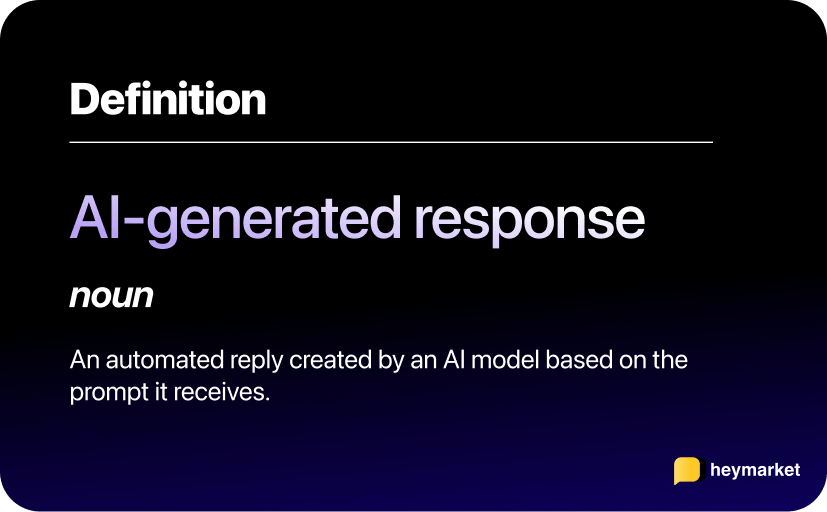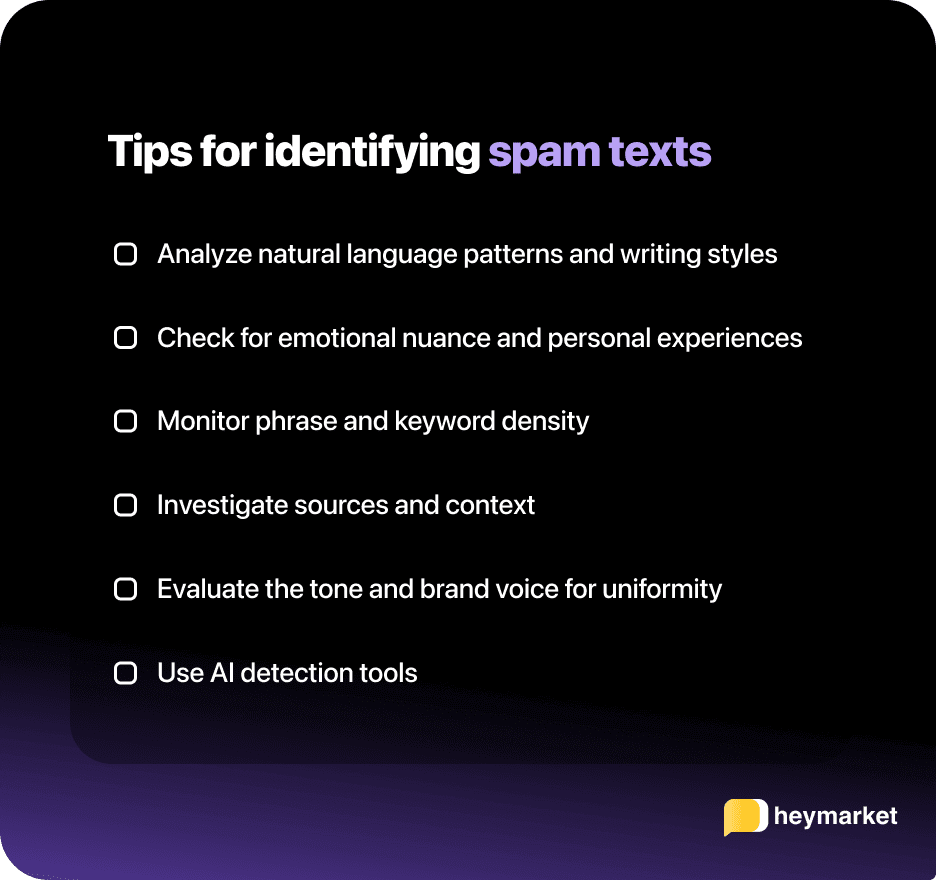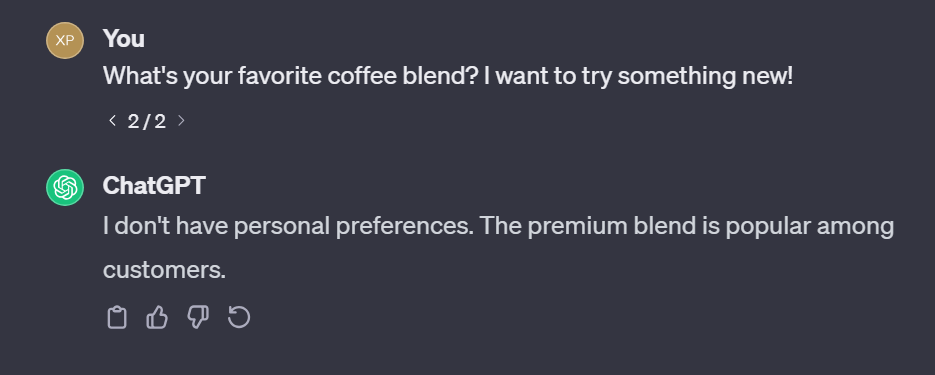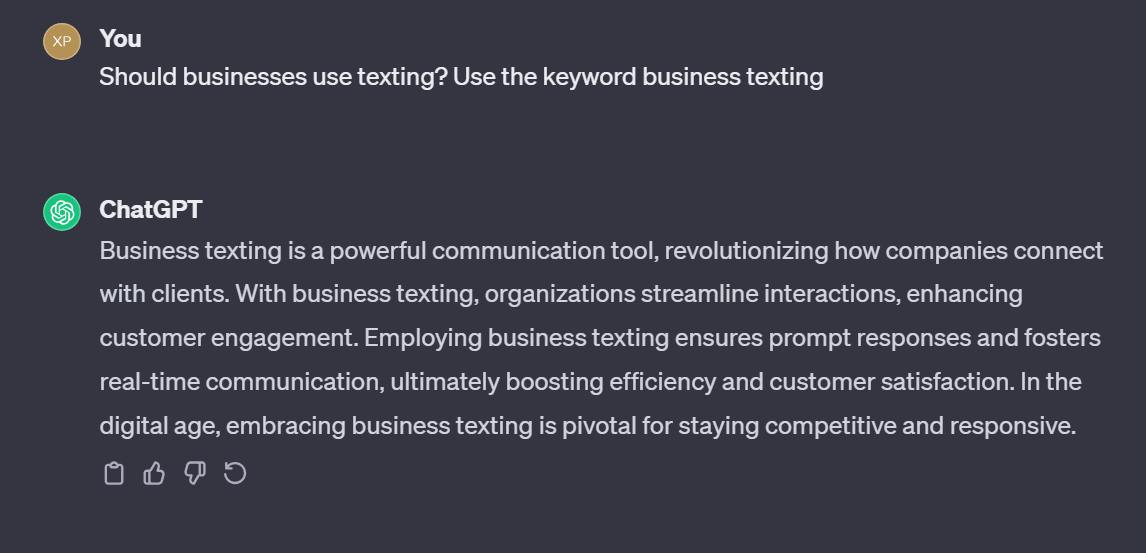Artificial intelligence (AI) is one of the most popular trends in technology and business, having an adoption rate of around 55%, according to a 2023 survey. While it has been in use for a while behind the scenes – about 77% of devices use AI – its popularity has grown as AI’s capabilities continue to expand. As a result, AI tools have become more accessible to the general public, including small businesses and individuals, than ever before.
You’ve probably heard of students writing papers with ChatGPT and artists generating incredible works of art with DALL-E. People are also using these language and learning models to create AI-generated responses for both personal and business communications.
Using AI can help both businesses and consumers respond faster, generating anything from customer service replies to social media comments. With the right knowledge and experience, businesses and consumers generate clear, context-aware, humanlike, and engaging AI-generated responses.
It’s also important for consumers to keep an eye out for AI-generated responses. As these replies grow more prevalent, it’s becoming more and more important to be able to identify them. If you know how to identify AI-generated responses, you can be a more informed consumer. Or, as a business, you can share when you use AI in an element of your business to promote transparency with your customers while providing them fast responses.
Keep reading to learn how to identify AI-generated responses and how to implement them as a business.

See how Heymarket’s AI texting tools help you generate personalized, contextual responses.
Learn MoreWhat are AI-generated responses?
An AI-generated response is an automated reply created by an AI model based on the prompt it receives. You can use most forms of content as a prompt in addition to defining other specifications like tone, length, or keywords to include in the reply. The artificial intelligence program then “reads” the prompt, uses the information it has available to it through local or online resources, and creates a response that attempts to satisfy your request.

In addition to responses, AI also generates content including unique images, computer code, original stories, musical chord progressions, and more.
People use AI-generated responses for a wide variety of different applications, both personal and business-related. You can use these responses to craft professional emails to your boss or professor, reply to social media comments with a uniform brand voice, or even provide basic customer service via text when your agents aren’t available.
AI integration with individuals and businesses has grown exceptionally in the past seven years, with adoption more than doubling since 2017. Some expect the growth rate to increase even further, with an estimated 37.3% annual growth rate for the industry between 2023 and 2030. As a result, developers release new tools and programs frequently while existing applications get better with more use and refinement. This growing prevalence is why you need to know how to identify AI-generated responses and use them effectively as a consumer or business.
Why it’s essential to identify AI-generated responses
AI-generated responses can help individuals, professionals, and businesses communicate more efficiently. But it’s important to understand how AI works to use it effectively. A program can only use the information that you provide or that it can access to provide a relevant and factual response.
Generative AI models learn by collecting training data, such as conversations, chat logs, and large batches of text, and analyzing them. They take this information, check it for patterns, and attempt to replicate the sentence structure by calculating what word should come next based on the training data provided. Over time, and with more data, it can refine its calculations and begin to mimic natural language patterns to sound human. However, if the training information provided is incorrect or incomplete, or the response requires specific context to be relevant, the model may produce misinformation.
Misinformation is a significant concern when implementing or interacting with artificial intelligence. AI models can lie or make things up entirely while presenting them as facts. Sometimes, the model doesn’t provide you with a reliable source – or any source at all. So, if you don’t know whether a response you receive is from a human or AI model, misunderstandings can arise.
AI-generated responses can greatly improve your customer service response time, but it shouldn’t be at the risk of accuracy. You should always review any content created by AI to ensure it’s accurate before sending it to customers. If customers use your website’s live chat or text-enabled business phone number to ask questions, they likely expect a human on the other side who can use discretion and specific knowledge to provide an accurate answer.
However, if the information they’re receiving is actually from AI-generated responses without disclosing that fact, they may take the information as a verified fact and act based on the answer they receive. If it’s wrong, you risk customers getting upset when your refund policy is shorter or your shipping times are longer than expected, hurting your relationship and business reputation.
If you’re sharing information that is AI-generated without oversight and fact-checking, it’s important that you disclose this fact to avoid misinformation and miscommunication. If you’re consuming information, determining what’s AI-generated can help you avoid mistakes and minimize the risks posed by malicious AI communication like phishing emails, social engineering, and intentional misinformation that can cause harm.
How to identify AI-generated responses
If you’ve read a blog, visited numerous websites, interacted on social media, or consumed some form of marketing copy within the last six months, you’ve likely seen AI-generated content – whether you realized it or not.
AI-generated responses become harder to identify every day. Developers build AI models to constantly adapt their outputs so that they’re as human-like as possible to provide a more engaging conversation and more personal connection. Ultimately, the creators and users of AI-generated content don’t want you to know that artificial intelligence wrote it.
Establishing a foolproof method of identifying AI-generated responses is challenging due to the adaptability of artificial intelligence. Fortunately, there are methods that you can use to help you identify if AI wrote the content so that you can interact with it accordingly.

Analyze natural language patterns and writing styles
Natural language patterns are the elements of human language that give sentences meaning and allow them to be understood. They’re a very “human” element of communication, so artificial intelligence strives to adapt and implement these elements constantly through natural language processing (NLP.)
You might find that the copy is unnecessarily wordy or includes a lot of transitional terms to help tie together separate thoughts because the model doesn’t understand the context of the piece. There may also be instances of keyword stuffing or repetitive content, incorrect claims, surface-level content due to a lack of data, or overly formulaic writing that’s hard to read.
AI models can also struggle to interpret complex language elements that make the training data hard to understand without context. Irony, idioms, and sarcasm are difficult for a model to understand, which can lead to incorrect responses and problems with sentiment that muddies the intent of the response.
These shortcomings primarily come from a lack of high-quality data. Without enough diversity in the training data provided, AI models can’t experience and interpret these complex linguistic elements. However, as AI continues to advance and gains access to more data to help train these models, natural language processing will improve.
Check for emotional nuance and personal experiences
Human speech and communication rely on more than just the words, their definitions, and the sentences they form. A number of factors, including context, tone, intent, and sentiment, determine the true meaning of a sentence, which humans can determine thanks to personal experience with communication.

AI-generated responses don’t have the context and experience of being a human and communicating with others, so they lack the emotional intelligence required to convey emotion and engage the reader. They also can’t draw on personal experiences or a first-person perspective, so they focus on providing factual information as opposed to drawing conclusions.
Their responses rely on the training data that the model receives, and they often interpret the content that they receive literally, making it hard to provide comprehensive, in-depth, and tailored replies.
For example, it might interpret a homonym incorrectly and completely change the meaning of its message. However, this is improving as more data becomes available, and technology advances to better interpret nuance.
Monitor the density of certain phrases or keywords

An artificial intelligence model’s vocabulary depends on the training and data that it receives for reference, as well as the specifications included in the prompt. Overemphasizing certain keywords or brand elements in training or the prompt can cause the model to overuse them and result in robotic and “spammy” text that requires more editing to effectively engage people.
Investigate sources and context
AI models write content that is generally based on existing resources within the program’s database or resources accessible online. As a result, the AI-generated content can only be as accurate as the sources it uses.
If you want to check a piece of content like a blog for AI influence, you can begin by looking into the author. If they have a byline and a portfolio of work in reputable locations, it’s less likely to be harmful or incorrect content. However, it can still be AI-generated.
You could also research any sources provided and double-check any statistics or data referenced in the article to ensure it’s not fabricated. Data without a source may also indicate the use of AI assistance because some models don’t provide sources or they use internal resources without links.
Finally, reviewing the article within the context of the website to ensure it fits and looking into sources to ensure they’re relevant can verify that the content isn’t from AI.
Evaluate the tone and brand voice for uniformity
AI lacks the intuition, human experience, and emotional intelligence of a person, which means they have a hard time portraying humanity and connecting on an emotional level. AI-generated responses are generally more logically inclined, focusing on facts and substance instead of delivery or tone. The creativity of a person to interpret and embody the essence of a brand uniformly throughout all forms of communication isn’t easily replicated, which can lead to cold and impersonal tones that don’t match the experience your business wants to provide.

Use AI detection tools
When in doubt, investigate AI with AI! There are a number of AI detection tools that you can use to scan the copy for inconsistencies, check sources, compare it against other content, and analyze the content for features related to AI-generated content.
12 examples of AI-generated responses
AI-generated responses can be found in most places on the internet, including websites, social media platforms, forums, and many more question-and-answer sites. Here are six examples that you might have come across in recent years.
Social media comments
Social media comments are a common use case for AI-generated responses because they have straightforward context that is easy to analyze. Companies may use them to add views and comments to their posts, engage with other accounts through comments, or market their page in replies to improve brand visibility.


Customer service interactions
Customer service is a time-intensive part of being a business. Answering questions, resolving complaints, and communicating with customers throughout the sales process can take time, so businesses have started to add AI-generated replies to customer service workflows, giving agents time to deal with more complex issues.


Email responses
The average office worker sends 40 emails a day and receives over 120. AI-generated responses can cut down on response times by drafting emails using AI, based on the content of the email and the tone that the user requests within the prompt. The user can then edit or re-generate the email with prompt changes until it’s ready to send.


Product reviews
Product reviews are detail-heavy pieces of content that don’t require a lot of nuance or context. Review blogs and other review-based sites can enter information from a product listing and generate a review using that data, often along with keywords or tone preferences, to make unique content targeted for SEO.


Blog comments
If you run a blog with a lot of traffic, you probably receive comments or questions underneath your content from your readers. Using the context of your blog post and the content of their message, you can use AI to generate responses and then edit them to engage with commenters. Or, you can reply to another site’s blog with a generated comment to help you build a relationship with them.


Chatbot interactions
Chatbots are a popular use for AI-generated responses that provide fast responses to incoming messages based on the content of the message. You can train them through conversations that refine their understanding of a specific business’s information and procedure, helping to build more conversational interactions.

Tips for individuals and businesses
As a consumer, it’s important to be aware of AI-generated content so that you know how much you can trust a source of information.
As a business, an AI text message generator can help you provide faster and more effective customer service. You can use features like Heymarket’s AI-assisted responses for quick and engaging social media, email support, live chat, and customer service replies through other communication channels.
But, you need to disclose when you’re using AI, especially when using tools like AI live chat bots, to inform customers of potential misunderstandings. Your team must also check AI-generated replies and tweak them before you send them to customers to ensure accuracy.
Learn to recognize AI-generated content to stay informed online
Artificial intelligence is here to stay. As time goes on, it’s going to become harder to tell where the AI model ends and the human content begins. However, once you learn how to recognize AI-generated content, you can begin to determine which sources are worth following.

Learn more about how Heymarket’s AI texting can help your business reach more people.
Learn More




